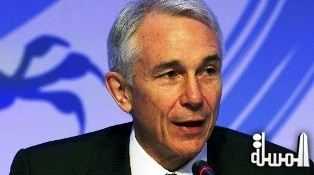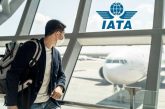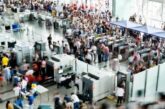
Preparing for Growth
-Challenges for Asia Pacific–
Almasalla, ATP News- (Tokyo) – The International Air Transport Association (IATA) identified continuous safety enhancement, the availability of cost-efficient infrastructure and environmental responsibility as critical factors to ensure that Asia-Pacific continues to realize the enormous economic and social benefits of air connectivity.
“It is no understatement to say that air connectivity underpins modern economies. Aviation and aviation-enabled tourism accounts for over 24 million jobs and over $500 billion in economic activity across the Asia-Pacific region. And that contribution has tremendous potential to grow,” said Tony Tyler, IATA’s Director General and CEO in a keynote address to the Association of Asia Pacific Airlines Assembly of Presidents in Tokyo, Japan.
 Globally some 3.3 billion passengers are expected to board flights this year, and is expected to grow to 7.3 billion by 2034. Taking into account connecting flights that consists of some 2.8 billion journeys today, growing to 6.1 billion by 2034. By 2034 we expect that nearly half of all air travel (some 2.9 billion journeys) will touch the Asia-Pacific region (up from around 40% today). Over the next 20 years, Asia-Pacific is expected to account for about two-thirds of global growth.
Globally some 3.3 billion passengers are expected to board flights this year, and is expected to grow to 7.3 billion by 2034. Taking into account connecting flights that consists of some 2.8 billion journeys today, growing to 6.1 billion by 2034. By 2034 we expect that nearly half of all air travel (some 2.9 billion journeys) will touch the Asia-Pacific region (up from around 40% today). Over the next 20 years, Asia-Pacific is expected to account for about two-thirds of global growth.
“Aviation is an industry with tremendous potential. Asia-Pacific is leading the industry’s growth. But there will be challenges to become ever safer, to provide cost-efficient infrastructure and to ensure environmental responsibility,” said Tyler.
Safety: “Flying is safe. But, on very rare occasions, accidents do happen. In 2013 there were 16 fatal accidents among 36.4 million commercial flights. And the two tragic accidents involving Malaysia Airlines this year are a sad reminder that safety is always a constant and ever-evolving challenge,” said Tyler.
.jpg)
The IATA Operational Safety Audit (IOSA) is a good example of the industry’s commitment to continuous improvements. The global standard has been adopted by some 400 airlines globally, including all 240 IATA carriers for which it is a condition of membership. Enhanced IOSA turns this biennial snapshot of an airline’s operational safety practices into a continuous monitoring program. By September 2015 all IATA airlines will migrate to the Enhanced IOSA program.
Tyler also urged greater participation in IATA’s Flight Data Analysis and Flight Data Exchange programs. “Data will drive much of our advancements in safety. The more that we collect and analyze, the better we will become at driving safety forward,” said Tyler. Along with encouraging individual participation by airlines, Tyler endorsed an initiative of the Asia-Pacific Regional Aviation Safety Group (which brings together 20 governments and 12 international organizations, including IATA) to use IATA’s Flight Data Exchange platform to share critical safety information.
Infrastructure: Keeping pace with expected growth will be a challenge for infrastructure. This is being addressed with some $3 billion earmarked for improvements in air traffic capacity and management. IATA is a strong supporter of the Seamless Asian Sky initiative that will facilitate growth in a very common-sense way—by ensuring inter-operability across the region and with adjacent airspace. In parallel, IATA is working closely with Chinese authorities to ease airspace congestion. It also supports the redesign of airspace at Tokyo’s Haneda Airport that will increase capacity taking into consideration that modern aircraft are some 70% quieter than those of the early jet age.

Asia Pacific is home to many world class hub airports. As governments continue to pursue airport expansion programs across the region, Tyler called for caution when engaging private sector financing.
“Private capital is not a panacea. To be successful it must have a strong governance structure embedded in regulation that keeps the consumer in mind when setting parameters on price and quality. It must set reasonable expectations on returns—in line with airports being public utilities, not hedge fund investments. There must also be reasonable limits for any royalty or concession-fee collected by the government. And the governance structure must institutionalize robust cost-benefit analysis and user consultation in the evaluation of capital expenditure plans,” said Tyler.
He made special reference to the Philippines, Indonesia and Vietnam which have major challenges to meet even existing demand with the current infrastructure. He also noted the need to define a strong regulatory framework as part of discussions on the privatization the company managing Kansai and Itami airports in Osaka.
Environment: Airlines are making solid progress on targets to achieve carbon neutral growth from 2020 and to cut net emissions to half of 2005 levels by 2050. Along with long-term measures to improve technology, operations and infrastructure, achieving these challenging targets will also require access (at least in the short-term) to market-based measures. At the 2013 IATA Annual General Meeting in Cape Town, IATA members agreed to call on governments to implement a mandatory global carbon offset scheme.
“It was not an easy decision. And the details of how such a scheme could operate are being discussed both at the International Civil Aviation Organization and within IATA. There is no perfect solution. Every airline is in a unique circumstance. But our experience in the climate change debate so far has demonstrated the value of unity. Our collective mission has to be to find the best compromise. It won’t match everyone’s needs 100%, but it most certainly will be better than leaving it to governments to develop a patchwork of solutions that will be a nightmare for all,” said Tyler.







